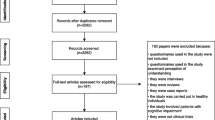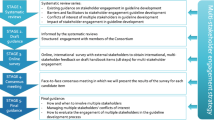OBJECTIVE:
To assess the level of involvement patients want in decision making related to the acceptance or rejection of an invasive medical intervention and whether their preference for decision making is related to their preference for qualitative (verbal) or quantitative (numeric) information about the risks of the procedure.
DESIGN:
Cross-sectional study using structured interviews of consecutive patients seen for continuity care visits in a general medicine clinic.
SETTING:
A university-based Department of Veterans Affairs Medical Center.
PATIENTS:
Four hundred and sixty-seven consecutive patients with a mean age of 65.2 years (SD 10.70 years, range 31-88 years) and with a mean of 12.6 years (SD 2.96 years, range 0-24 years) of formal education.
MEASUREMENTS AND MAIN RESULTS:
In the context of an invasive diagnostic or therapeutic intervention, patients were asked whether they preferred patient-based, physician-based, or shared patient-physician decision making. Patients were asked to give the ratio of patient-to-physician decision making they preferred, and whether they preferred discussions using words, numbers, or both. Of 467 subjects, 318 (68%) preferred shared decision making; 100 (21.4%) preferred physician-based decision making; and 49 (10.5%) preferred patient-based decision making. In terms of risk disclosure, 436 (93.4%) preferred that their physician disclose risk information to them. Of these 436 patients, 42.7% preferred disclosure of information about the probability of adverse outcomes using qualitative (verbal) expressions of probability; 35.7% preferred disclosure in terms of quantitative (numeric) expressions of probability; and 9.8% preferred disclosure in both qualitative and quantitative terms. Younger patients (odds ratio [OR] 0.96; confidence interval [CI] 0.93, 0.99), patients who had at least one stroke (OR 3.03; CI 1.03, 8.90), and patients who preferred to discuss risk information with their physicians in terms of numbers (OR 2.39; CI 1.40, 4.06) tended to prefer patient-based or shared decision making.
CONCLUSIONS:
Male veterans consistently preferred shared patient-physician decision making in the context of invasive medical interventions.
Similar content being viewed by others
Author information
Authors and Affiliations
Rights and permissions
About this article
Cite this article
Mazur, D., Hickam, D. Patients' Preferences for Risk Disclosure and Role in Decision Making for Invasive Medical Procedures. J GEN INTERN MED 12, 114–117 (1997). https://doi.org/10.1007/s11606-006-5006-8
Issue Date:
DOI: https://doi.org/10.1007/s11606-006-5006-8




